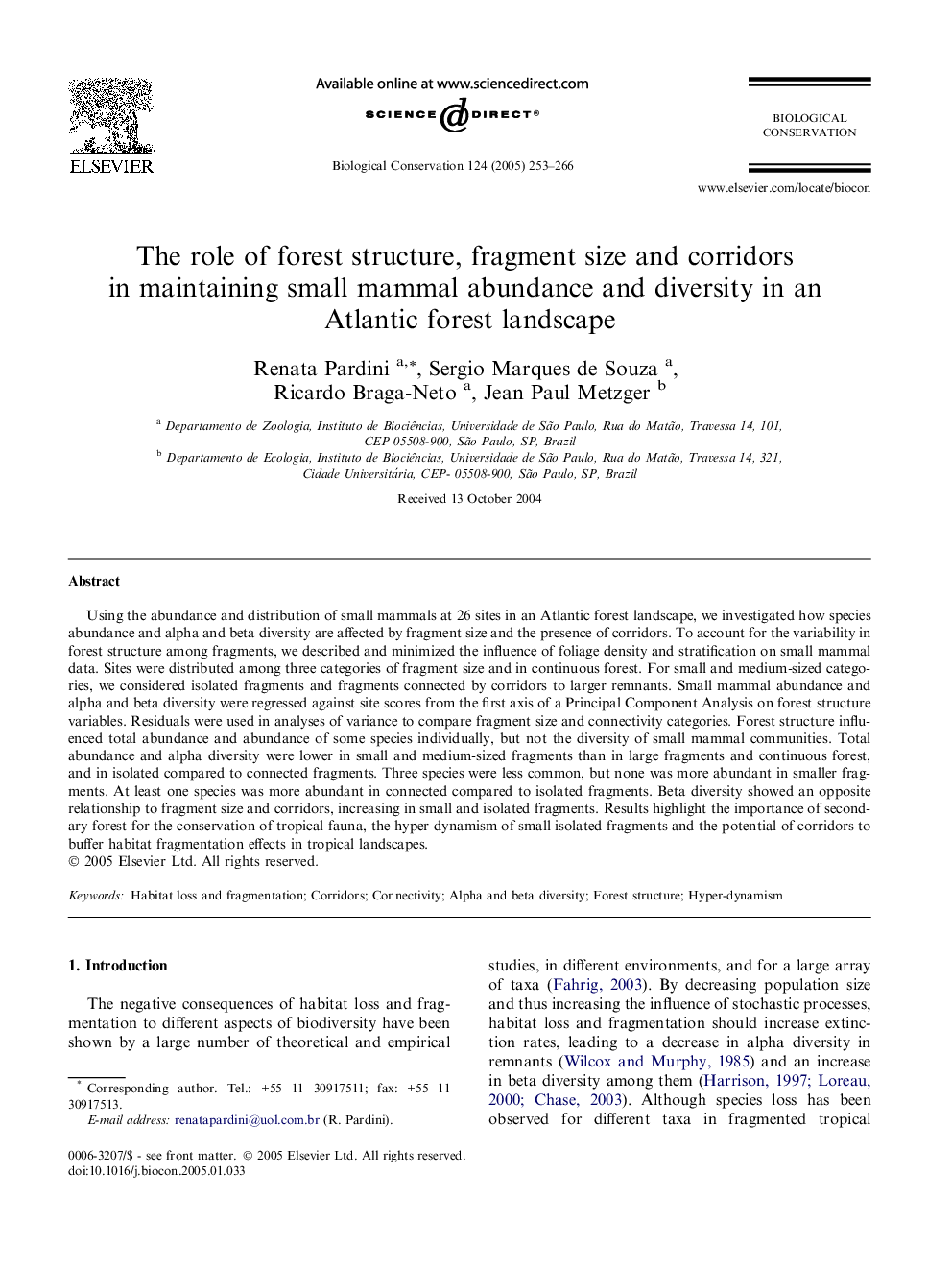| Article ID | Journal | Published Year | Pages | File Type |
|---|---|---|---|---|
| 9445990 | Biological Conservation | 2005 | 14 Pages |
Abstract
Using the abundance and distribution of small mammals at 26 sites in an Atlantic forest landscape, we investigated how species abundance and alpha and beta diversity are affected by fragment size and the presence of corridors. To account for the variability in forest structure among fragments, we described and minimized the influence of foliage density and stratification on small mammal data. Sites were distributed among three categories of fragment size and in continuous forest. For small and medium-sized categories, we considered isolated fragments and fragments connected by corridors to larger remnants. Small mammal abundance and alpha and beta diversity were regressed against site scores from the first axis of a Principal Component Analysis on forest structure variables. Residuals were used in analyses of variance to compare fragment size and connectivity categories. Forest structure influenced total abundance and abundance of some species individually, but not the diversity of small mammal communities. Total abundance and alpha diversity were lower in small and medium-sized fragments than in large fragments and continuous forest, and in isolated compared to connected fragments. Three species were less common, but none was more abundant in smaller fragments. At least one species was more abundant in connected compared to isolated fragments. Beta diversity showed an opposite relationship to fragment size and corridors, increasing in small and isolated fragments. Results highlight the importance of secondary forest for the conservation of tropical fauna, the hyper-dynamism of small isolated fragments and the potential of corridors to buffer habitat fragmentation effects in tropical landscapes.
Keywords
Related Topics
Life Sciences
Agricultural and Biological Sciences
Ecology, Evolution, Behavior and Systematics
Authors
Renata Pardini, Sergio Marques de Souza, Ricardo Braga-Neto, Jean Paul Metzger,
